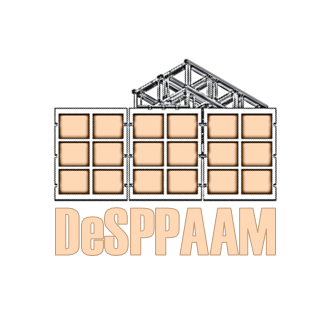
-
StatusCompleted
-
Status date2022-04-13
-
Activity Code5B.166
This project involves the development of a highly scalable and modular deployable steerable patch panel antenna array compatible with microsats (between 10-100kg). This technology development directly addresses the need for high-throughput systems for microsat platforms. High Throughput Satellite (HTS) systems are designed to provide high bandwidth connectivity services at a lower cost to end users compared to regular satellites.
However, with the microsat market growing rapidly, the reduced size of the platform imposes some limitations to providing high data-throughput capability. Oxford Space Systems, Printech Circuit Laboratories and AAC ClydeSpace saw an opportunity to develop a scalable technology to meet the needs of the emerging cost-effective connectivity market.
The product is developed for 6U platform and larger, using 6U platform as a baseline. The system architecture is with two panels, one of the two axes steering mechanism and passive deployment mechanism is accommodated within a volume available between a Cubesat and a Cubesat Dispenser. One of the two main challenges was to meet the steering mechanism performance requirement with constraints on routing and accommodation of the coax cables on the panel and within the steering mechanism. The second challenge was to meet RF performance due to requirements on manufacturing tolerance to be achieved for high frequencies antennas based on PCB technology.
The lack of available antenna solutions is one of the factors limiting the growth of the microsat data-throughput market. One of the main challenges is to provide a technology that can make the terminal cost affordable to the final end users.
This antenna system targets 10kg+ microsat platforms and the solution developed under this project serves as a key enabler to unlock new potential markets for cost-effective connectivity using Ka-band.
The key factors in the design philosophy adopted are scalability and modularity. As such, minimal change is required to adapt the architecture to a given customer’s needs. The breadboard developed under this project is a Ku-band and Ka-band patch antenna array (Tx and Rx) for high data-throughput applications, and single S-band patch antennas (Tx and Rx) for TT&C applications. The patch antenna systems are mounted on a steerable panel with two motorised axes of steering, each with a 120° steering envelope, a maximum steering speed of 1.6°/s, and a target accuracy of ±0.1°.
The system architecture consists of two panels, one of which is designed to accommodate multiple patch antennas of varying frequencies. The panels are steerable in two-axes (i.e., roll and pitch) and are connect to one another via passive deployment mechanism.
-
The panels are stowed flush against the side of the platform using hold down release mechanism (HDRM).
-
The two-axes steering and deployment mechanism allows for high precision pointing of the antennas.
-
The panels are deployed away from the platform using the steering mechanism at the root of the panels.
-
The secondary panel is deployed away from the primary panel using passive deployment mechanisms.
-
The coaxial cables from the antennas run through to the platform via steering mechanism at the root of the panel.
This project involved:
-
Mission Requirements and concept definition with the support of AAC Clyde Space who provided mission profile and case study
-
Preliminary Design Review was held after the trade-off studies, design/analysis, critical breadboarding and associated testing for each subcomponent of the DeSPPAAM system
-
Critical Design Review was conducted after all subcomponents were integrated through detailed design and analysis
-
Test Readiness Review: once all parts were procured, manufactured, and assembled as a breadboard of the DeSPPAAM system
-
Testing of the DeSPPAAM breadboard was conducted (kinematic studies, hot and cold deployment, RF testing) leading to the Final Review.
Completed.





